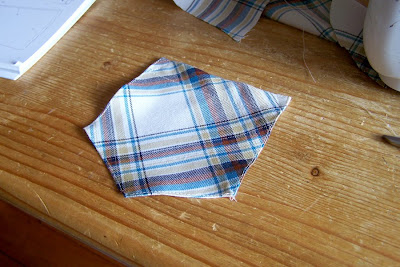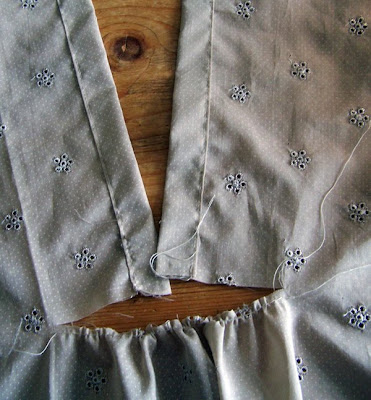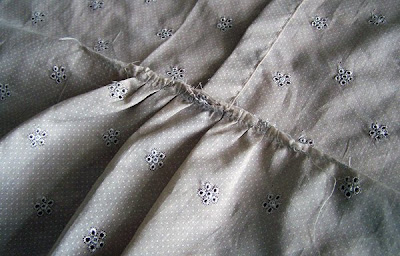



I managed to sew up the next dress from my Japanese sewing book a few weeks ago, dress V which is the shirt dress with a collar and pocket. I found sewing this up was much like the first dress although I did find sewing the collar a tad tricky as I've never actually sewn a garment which has a fold over collar. I did however manage to work it out by looking at an existing shirt I had which had a similar collar.
I made a few alterations to the pattern which I thought would give it a slightly more feminine touch to it. I noticed on the original pattern the shape of the shoulder is quite straight and was of a dropped nature so I raised the shoulder line and added gathers. I also added gathers to the cuff. Below is how I did these alterations.
For this dress I chose a lovely soft cotton plaid fabric (about 1.7 metres). Matching up the lines wasn't too bad with this pattern, it just took a little extra time to make sure they were in line.
The alterations
Raising the shoulder
Trace your sleeve pattern onto tracing paper. To give the shoulder a raised look you'll need to increase the head by about 2cm. Mark 2cm above the very top of the sleeve and then draw a gentle slope, starting from the back balance point mark. This line will continue over the top of the sleeve head and to finish at the front balance point mark.


This is your new sleeve head. Now you've altered the sleeve you'll need to take 2cm off of the front and back bodice piece. This is to ensure that the sleeve will comfortably fit the sleeve hole.
Mark 2cm in from the end of the shoulder on the front bodice piece. Start from that mark and draw a gentle curve sloping inwards until you reach the sleeve line where the balance point is. Then cut off the area you've just marked.


Do the same with the back bodice piece and you're done.
This technique of raising the shoulder is really useful when you require a gathered shoulder head. Raising the shoulder allows the gather to sit slightly in of the end of the shoulder which aesthetically looks better.
Gathers
So onto creating those gathers. At the bottom of your sleeve measure the desired height of the cuff you want, I think I made mine 5cm. Mark across and cut this amount off. This is your cuff- remember to add seam allowance to the top edge of your cuff after pinning it to your fabric.
Starting from the top centre line on your new sleeve piece draw 5 lines, 2cm apart. Cut down along these lines.

Number your strips and then spread them out leaving spaces of the desired amount (I did 2cm). Stick these all down on top of a new sheet of tissue paper, tidy the top sleeve curve by re-drawing the line. Go onto cut around the whole sleeve shape.

This will be your new sleeve. Your gather line will be from where the first strip starts to where the last cut strip ends. Now you're ready to sew the rest of the dress.
Step 3. Sew pocket
Take your pocket and fold in and press the seam allowances according to the image in step 3. remember that the top edge folds over twice, once by 1cm and again by 1.5cm making a total of 2.5cm. Sew down your top edge, 2mm from the edge.

At this point I actually sewed all the edges down as shown in the main image on page 76 and then sewed the pocket to the dress front. However the proper way would probably be to just go straight ahead and sew the pocket onto the dress without sewing the edges down first. by the sewing the edges down first it did help me to neatly sew the pocket to the dress more easily, especially as the pocket it cut on the bias but it's up to you which way you do it!



There are quite a few steps to this tunic so I'll be posting them up in stages! Stage two coming soon...
















































